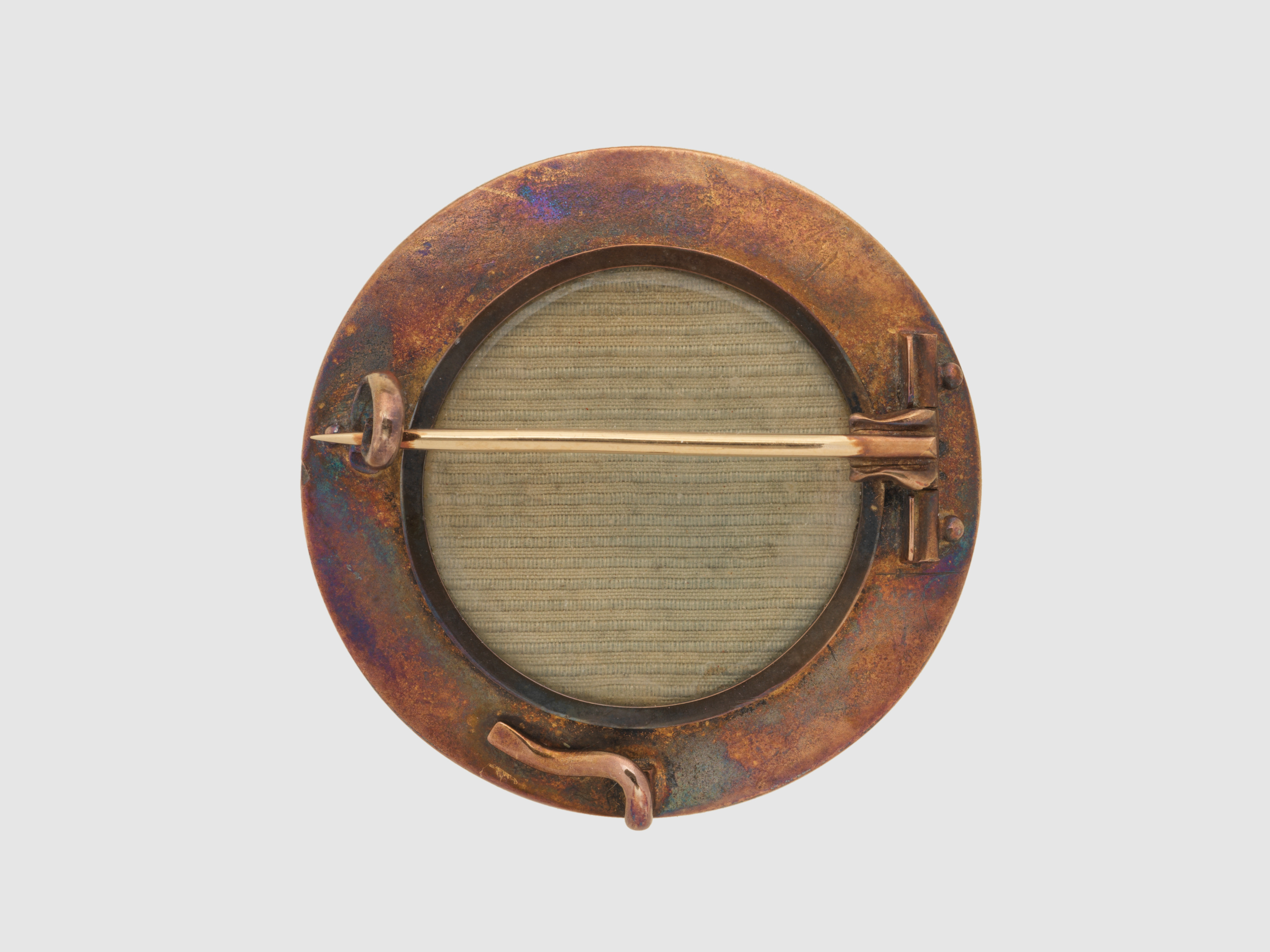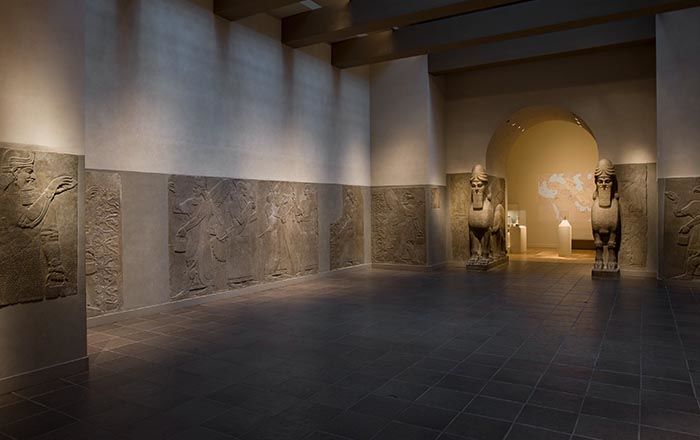Brooch with Assyrian divine archer in a winged disc
Not on view
Following the excavation of Assyrian palaces in the mid-nineteenth century, ancient Mesopotamian imagery began to be used in European decorative arts, including jewelry and ceramics. Publicity in the form of news coverage and popular books around the excavations, removal of many sculptures from sites in northern Iraq to England and France, and public spectacles such as the reconstructed ‘Nineveh Court’ in the Crystal Palace at Sydenham, London, fostered a fascination with Assyria and Assyrian art among the Victorian public.
The design of this brooch is based on a motif seen in some of the reliefs: a god drawing back a bow placed within a winged disc. A version of the same image was used on the title page of the English traveler Austen Henry Layard’s bestselling account of his excavations, Nineveh and Iits Remains (1849). In Assyrian art, particularly the palace reliefs of Ashurnasirpal II (r. ca. 883–859 BCE) from Nimrud, ancient Kalhu, the figure appears near the king in images of battle. In these scenes the king rides in a chariot and also uses a bow; sometimes the two figures are clearly presented in parallel. The identity of the deity is uncertain but has usually been interpreted as the state god Ashur or the sun god Shamash. The reverse of the brooch has a glass-fronted compartment for holding miniature portraits or other keepsakes, now empty.
This image cannot be enlarged, viewed at full screen, or downloaded.
This artwork is meant to be viewed from right to left. Scroll left to view more.



